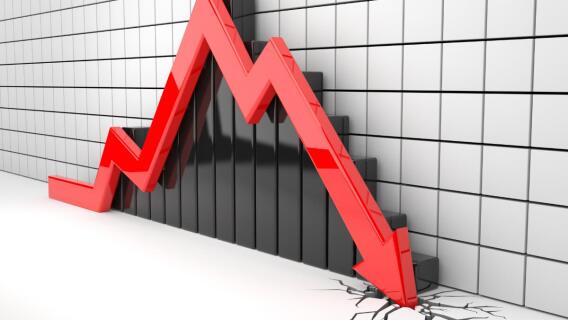The Next Bear Market May Be Closer Than You Think. Here’s What to Do Until Then
Talk of recession and a bear market is once again resurfacing. If you recall, there had been talk of recession this past December when the market sold off 20%. Bear markets usually accompany recessions. Is all this talk just bluster, or is it justified?
It might be a bit of both.
On the one hand, pundits fall all over each other to be the first to predict the next recession. In doing so they’ve successfully predicted nine of the last two recessions. Rest assured, if a recession is still five years away, many would still be nattering on about the imminent recession they’ve spotted.
[text_ad]
There are also good reasons why this recovery is lasting longer. It has been the weakest recovery in the post-World War II era and the normal excesses have not built up at this point. It’s also true that it is unusual for recoveries to get an injection of stimulus in the form of tax cuts and deregulation at such a late stage. At this point, there is no recession visible in the foreseeable future.
Bull Market on Borrowed Time
That said, recoveries always end in recession and bull markets always end in bear markets. Both the current recovery and bull market are already the oldest in history. Investing today gives you the feeling that you’re playing musical chairs, and the music has been playing for a really long time. It could come in a month or in three years, but a bear market is looming somewhere on the horizon.
Sure, this bull market could forge on for a while longer. But how much is left in the tank? It’s difficult to see the market advancing another 50% or 100% before the next bear market. Returns for the rest of the way will likely be less inspired than we’ve seen in the recent past. So what do you do?
You may reasonably wonder at this point why you should stay in the market at all. Why stick around for some measly twilight returns if it means risking riding into the next bloodbath? Why not get out now, wait for the bear market to hit, and then get back in cheap?
That’s easier said than done. There are a few things wrong with getting out of the market and trying to time re-entry. Market timing has not been a winning strategy for most. For one thing, what if you get out and the bull market continues to run for another five years, and you’re on the sidelines earning practically nothing? Do you get back in at a higher level?
Let’s suppose you get out of the market, and you’re right. The bear market comes in full force this fall. Are you going to jump in during the thick of the selloff? My experience has been that most people don’t want to try and catch a falling knife. When the market sold off 20% this past December, did you jump in while prices were low? If not, what makes you think it would be any different in the next market selloff?
The fact is market timing usually doesn’t work because most people miss out on all the returns before the bear market and then miss most of the bounce-back afterwards, if they get back in at all. In the end, most investors who try it end up worse off.
How to Prepare for the Next Bear Market
What if you stay mostly invested in stocks and a bear market creeps up?
Let’s use the last bear market as an example, the worst since the Great Depression. If you invested in the market index at the market high on October 8, 2007, right before the financial crisis, and just kept holding the index without adding another dime, today your average annual return would have been 7.67%. That’s still probably better than you would have done in any other asset class.
Of course, you would have had to endure some short-term pain and it would have taken several years to get back to even. But it’s also true that if you actually added more money along the way you could have significantly improved your returns. And most bear markets are nowhere near as bad as the last one. Most are actually not much worse than the selloff we saw last December.
The point is that bear markets are not the disaster many perceive. Bear markets actually represent fantastic opportunities to enhance your longer-term returns. Consider this: Since 1926 we have been in a bull market about 86% of the time and bull market returns have been significantly higher than bear market losses.
It’s more rational to look at a bear market as an opportunity to get in dirt cheap ahead of the next bull market. We should spend bear markets positioning ourselves for the next bull market. But many investors do the opposite. They spend bull markets worrying about how to position themselves for the next bear market.
At some point a bear market will hit. But you will be a much more successful investor over time if you look at it as an opportunity instead of a tragedy. Use this time to target certain investments and prepare to get in cheap. Don’t fear the next bear market – exploit it.
[author_ad]

